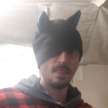Writing the Scene Transition
A subtle maneuver.

How can I write a scene transition?
A short while ago, an acquaintance of mine, who had been thinking about becoming a writer for several years, finally made an attempt at writing a novel. As usual, I insisted that before attempting a novel it is imperative to practice writing short stories, but to each their own. Right?
Anyway, through an email discussion, I received the following:
My problem is that my character just got through reading a letter while in school. That’s how one chapter ends. I want to start a new chapter on an entirely new day, but I’m not sure how to transition. Examples would be appreciated. Also, I’m aware that this question may be hard to understand. Thanks!
I knew right away the best method to observe—just start the new chapter.
You see, there's no need to provide readers with every minute of a character's daily life. If you need to, start the new chapter by saying something like the following:
John rolled out of bed the following morning.
It’s important to consider that readers need only know what they need to know. Redundant, I know, but that’s how it is.
Now, this example is far and away the simplest method for resolving the situation, and without reading my acquaintance’s book, and without being in her head, and knowing what she plans on writing next, I am obviously limited in my ability to respond, however, I want to delve a little deeper for the sake of my fellow readers.
To begin with, a scene transition, at its most basic level, is an idea that ties one scene into another. Scene transitions can occur from one paragraph to the next, between numerous pages, or between chapters. In some cases, they might even occur between the parts of a book, but this is an odd case, and I’d rather abstain from advising anyone to attempt a transition between books that have multiple parts; it’s the equivalent of advising someone on writing scene transitions between chronological volumes of a series, so we’ll keep it simple.
Let’s assume we’re writing a book about a boy who has lost his dog.
Johnny woke up at dawn to walk Ranger. Before even chugging his glass of O.J., he ran out onto the porch and immediately noticed the big hole in the screen. Ranger was nowhere in sight. A pang of uncertainty hit the young boy like a brick to the gut.
“Ranger! Come here, boy! Ranger?” Johnny shouted and bolted beyond the screen door, ran down the gravel driveway, and scanned the street.
Okay, you guys with me? The scene has been set: the boy has awoken to find his dog missing, and he’s taken the first step in the search. Now, we’ll assume that from one paragraph to the next there is a sort of scene transition.
Let’s assume that Johnny really wants to find Ranger, but it’s Monday, and it’s time for school. Obviously, he has to go to school, and he doesn’t have time to search for the pooch, so I advise the following:
Only a moment later, his mother shuffled over to him; her slippers made barely a sound even on the gravel walk. “Johnny, honey, what happened?”
“It’s Ranger, Mom. He’s gone!”
She saw the look of distress in his eyes. “Your father and I will look for him. Go get ready for school.”
“Um…okay…”
That day in school edged on by slower than molasses.
That’s it. That’s all one needs. Let’s recap, now.
In the first scene, Johnny woke up, noticed his dog was gone, and began to look for him. In the next scene, presumably, Johnny comes home to either find the dog retrieved or still missing; that depends on what kind of a turn the story takes, but the transition was created by a few bits of dialogue, and then the single sentence that stated Johnny went to school.
Following that sentence, it can simply be stated that Johnny comes home.
That day in school edged on by slower than molasses. It was after three in the afternoon when Johnny hopped off the bus. He immediately ran inside only to learn that Ranger was still missing.
In the above paragraph, the transition is still created by the single sentence. The following two sentences are used to set up the next scene, whatever it may be, however, a scene transition might require more complicated steps, but that depends on the complexity of the scenes and the novel.
Let’s see what can happen if the same story is a little more complicated.
Johnny woke up at dawn to walk Ranger. Before even chugging his glass of O.J., he ran out onto the porch and immediately noticed the big hole in the screen. Ranger was nowhere in sight. A pang of uncertainty hit the young boy like a brick to the gut.
“Ranger! Come here, boy! Ranger?” Johnny shouted and bolted beyond the screen door, ran down the gravel driveway, and scanned the street.
Big, black vultures were pecking at something; it looked to be a wet and scraggly brown form. No, please no. Holding back tears, Johnny ran for the dead animal. Spooked by the boy’s clomping, the harbingers of death took flight. Ranger was dead.
“Johnny?” his mother yelled. “What are you doing?”
“Oh, Mom,” he cried. “Ranger! Ranger’s dead, Mommy!”
“Oh, honey, come, come here.”
They ran, both of them wiping tears from their eyes, to engage in a gentle embrace. Johnny buried his face in his mother’s pink, fluffy robe. The soft material sopped up his tears, but did little for the wound in his heart. Ranger had been the child’s best friend for two years; there were no other smaller children in the neighborhood.
“Listen, here, Son,” his mother began. She had to wipe away her own tears as she spoke. “We’ll find out what happened. It was probably just a sad accident, but rest assured, your father and I will get to the bottom of this.”
The boy remained in tears, practically inconsolable, and so his mother decided it best for him to stay home from school. It took several days, but by questioning the neighbors, it was discovered that Mister Thatcher had a habit of driving home late from the local sport’s bar. It was widely believed that he had mistakenly killed Ranger, and when Johnny’s father confirmed that theory by confronting the drunkard with spots of blood on the grill of his truck, it opened up a whole can of worms on Orange Street.
Alright, you guy’s still with me? The scene transition, in this case, has been created by almost an entire paragraph. All of the sentences following: The boy remained in tears, practically inconsolable, and so his mother decided it best for him to stay home from school are employed to create a scene transition; in fact, it’s almost a scene unto itself. At this point, the writer can then decide where to go with the story.
Will it be the very beginning of trials of adolescence? Will it be the beginning of a grim story about coping with death? It doesn’t matter. The point is that this particular scene transition is a bit more complex.
Then, of course, as was stated at the beginning of this article, if there’s a scene transition between chapters, you don’t really need a transition; the chapter has ended. Let the new chapter set up the next portion of the story; there is no need to recap the previous chapter at the beginning of a new chapter, and there is no need to tell an audience that X amount of time has transpired, or that events have occurred.
In fact, if the story in question is the one provided in this article, and numerous years have passed since Ranger’s death, and Johnny is now an adult with his own family, a single sentence can explain that twenty years have passed since Ranger’s death.
The whole concept of scene transitions is super easy, really, if you just remember that your readers only need to know as much as they need to know. Always keep that in mind. Finally, if for whatever reason, you just can’t figure out a way to tie events together, don’t worry about it.
Finish your story. Skip the transition gap. It’s no big deal. Once the rest of the story is down, you’ll have a better idea of how to tie your scenes together; you may extend the surrounding scenes, and just end the chapter. You might write an entirely new chapter in between. You might even cut the scenes and never need the transition.
Thanks for reading. Be sure to check out my website for more articles like this one. You can also find my books and my editing services as well.
About the Creator
Aaron Dennis
Creator of the Lokians SciFi series, The Adventures of Larson and Garrett, The Dragon of Time series, and more.






Comments
There are no comments for this story
Be the first to respond and start the conversation.